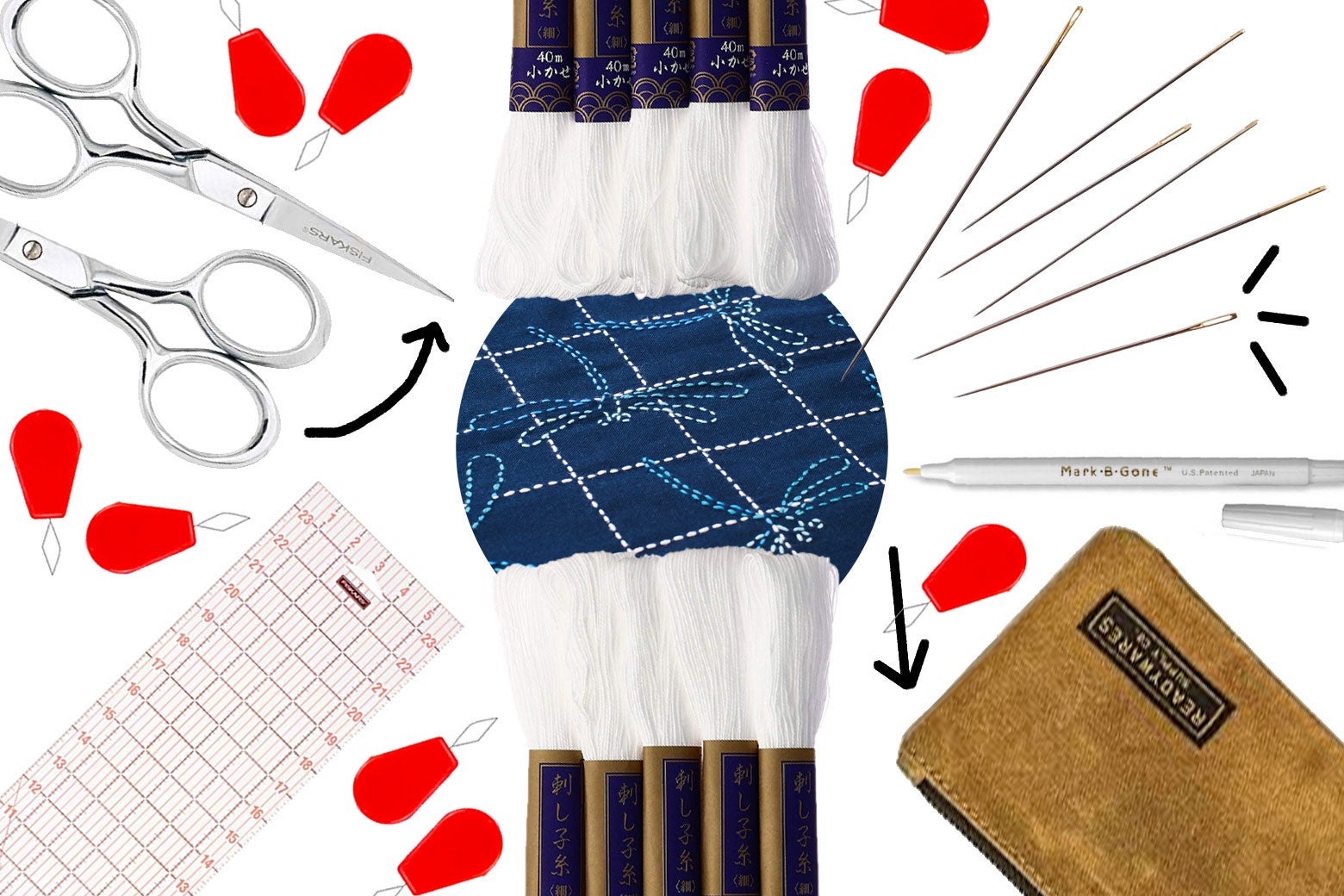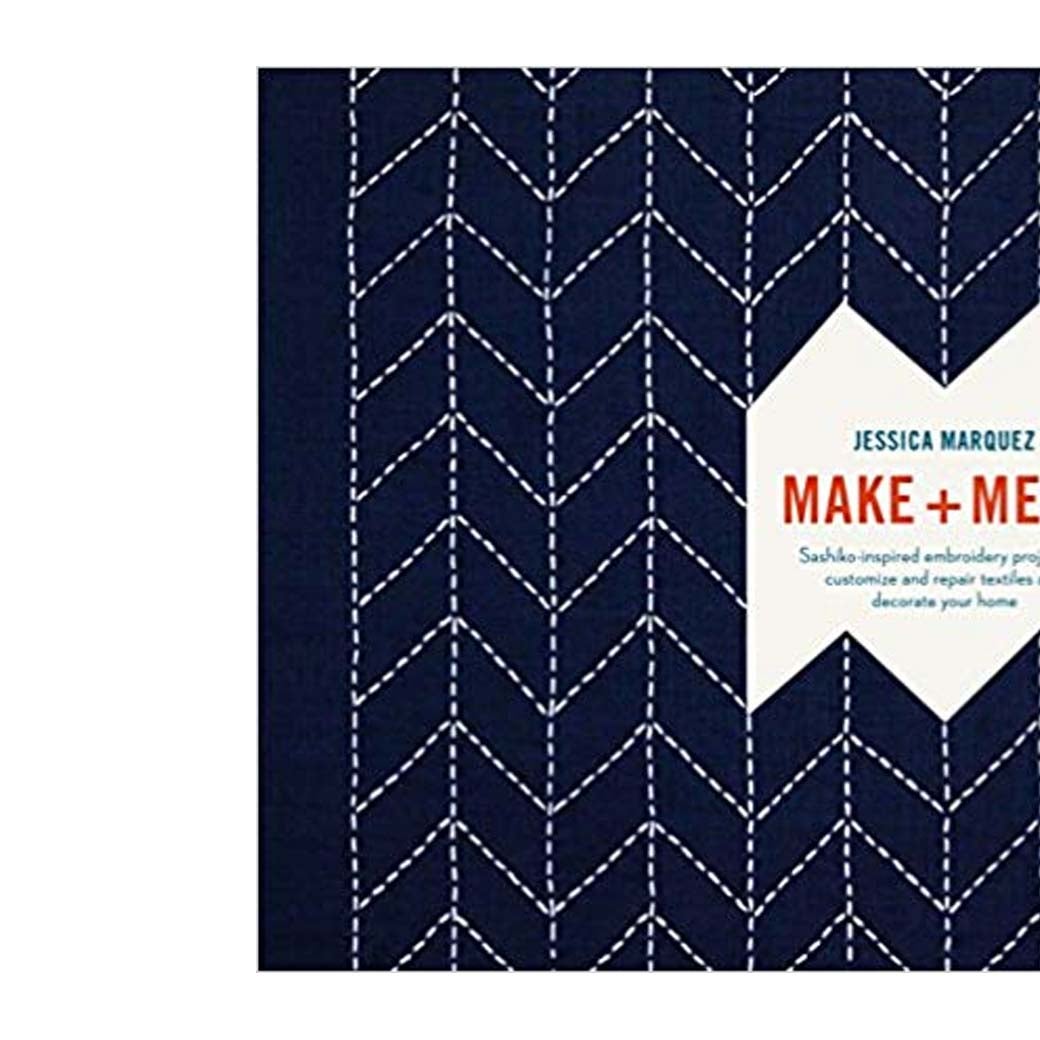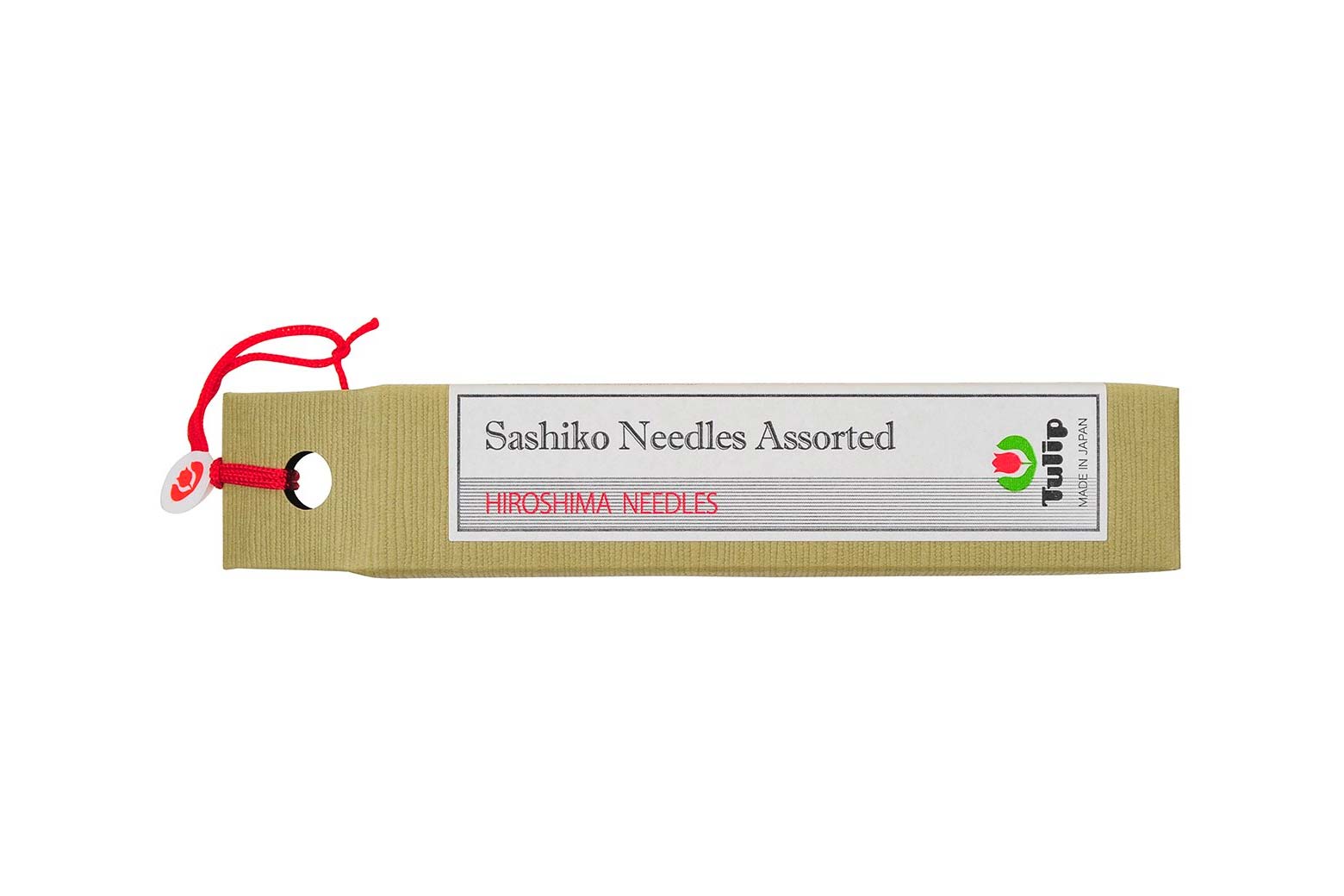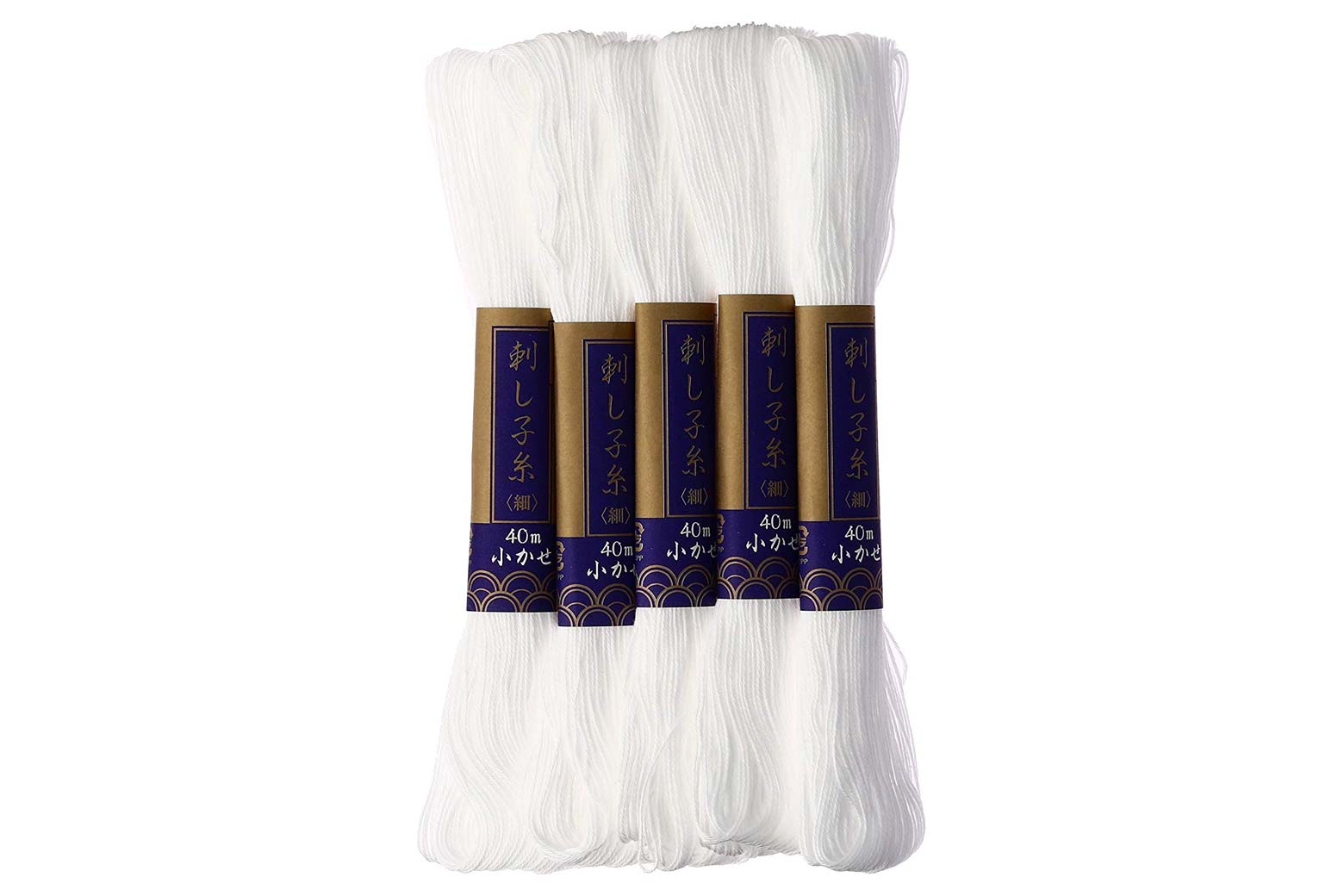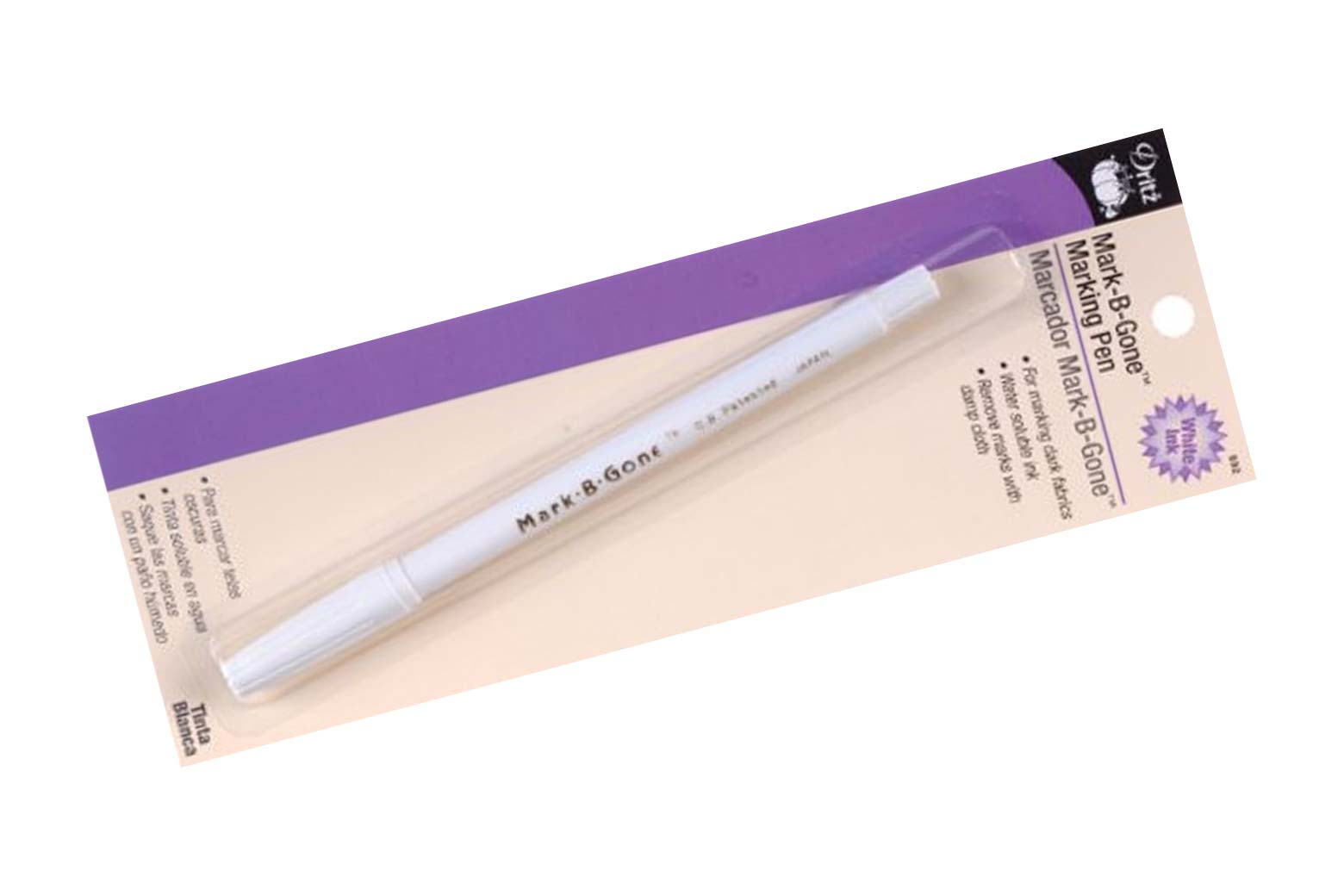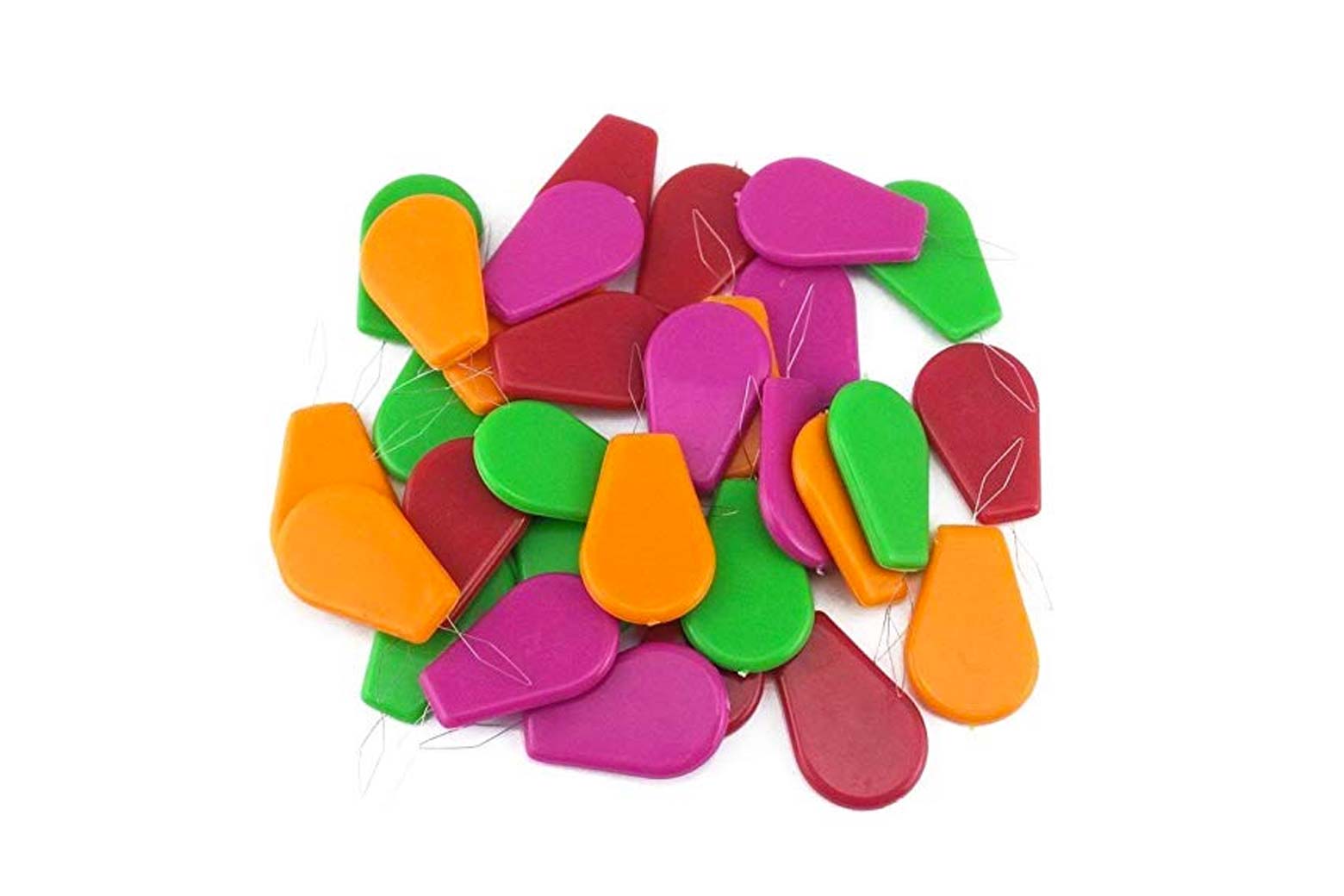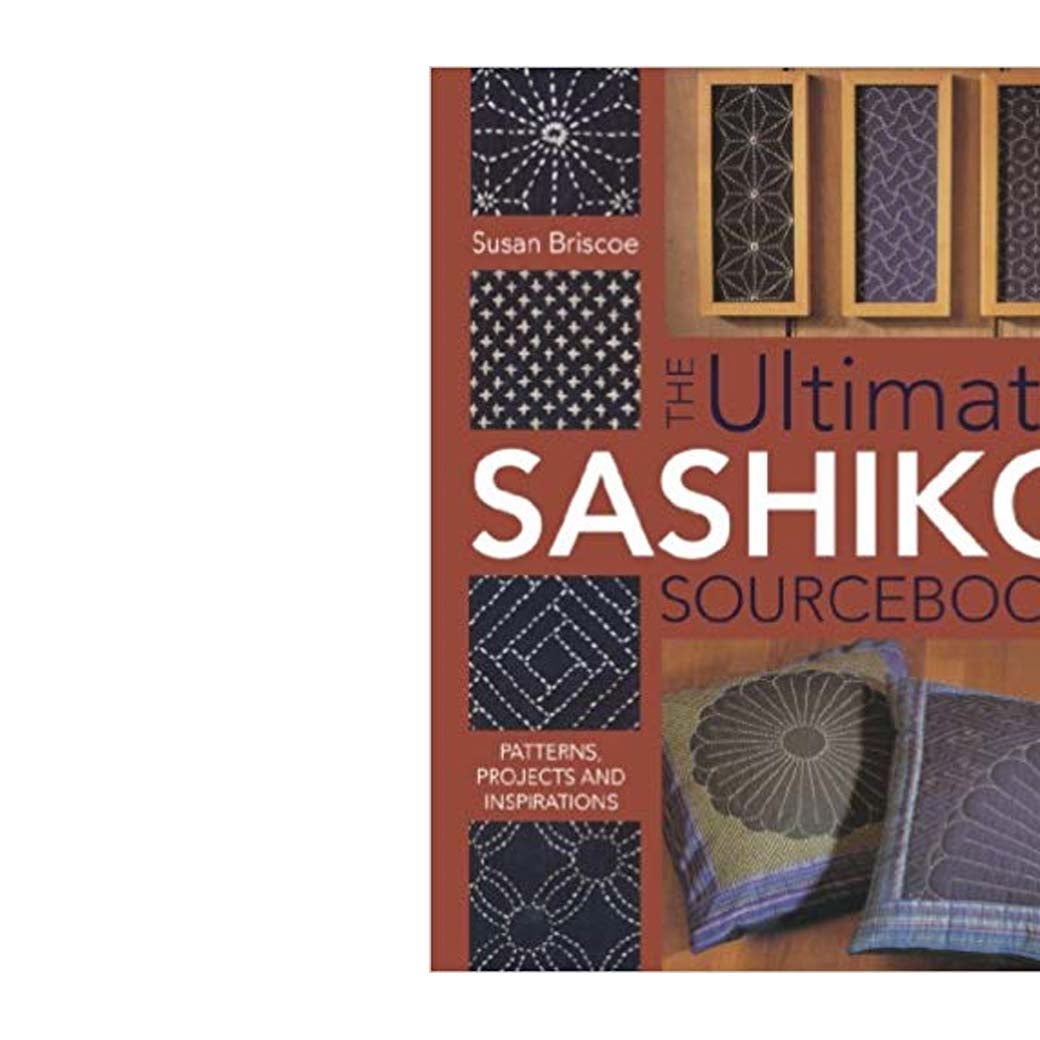Read more from Slate’s Cheapskate’s Guide to Hobbies. Looking to get in shape? Take up running. Love cooking? Bread baking is enormously gratifying. Seeking some equilibrium in your life? Try yoga.
Earlier this year, I started looking for a new hobby that would fit neatly into the space in my life that was then occupied by absentmindedly checking social media on my phone, such as when I was too tired to read a book, or traveling by train. I already knew how to sew—several years ago, I taught myself to use a sewing machine so that I could design and construct clothes with my young kids as an alternative to Candy Land and checkers. But sewing is complicated and requires intense concentration. Also, sewing machines don’t fit in suitcases. I knew that knitting and quilting would require planning and precision that I find objectionable in a hobby meant to be relaxing.
Then I read about sashiko, the centuries-old Japanese art of functional embroidery. Even if you’ve never heard the word “sashiko,” you are likely familiar with its aesthetic—geometric patterns boldly embroidered with white thread on indigo fabric.
The intricate patterns translate well to Instagram, and you can find printed, rather than stitched, versions of sashiko patterns from brands ranging from John Varvatos to Lululemon to Lucky. Its current popularity, however, is built on sewers making the patterns themselves, rather than purchasing finished products from fast fashion brands.
That’s not really surprising, considering its origins: Fundamentally, sashiko has always served as a way to visibly mend holes and tears in older clothes, and even create new clothes out of the remnants of old ones. In our age of disposable clothing, sashiko serves as a political and moral statement about consumerism and wastefulness. The fact that it is beautiful and a way to express one’s style is a bonus.
An even greater bonus, I discovered, is how economical it is to pursue: Given I already had some of the basic sewing supplies, putting together my sashiko kit would only cost me about $17. Even if I hated it or was terrible at it, I reasoned, it wouldn’t be a great loss.
As I got started, I immediately loved that sashiko requires no special skills—it is a basic running stitch, which is the one stitch you know if you, like me, didn’t realize stitches have names. While it looks better if you are fastidious, it looks OK even if you’re as sloppy and imprecise as I am. If you’re repairing a torn (imperfect) garment, it stands to reason that repairs can be imperfect as well.
I also love that sashiko feels inherently personal in a way that, say, following a Butterick pattern does not. Most pieces are small enough you can finish them before you’re sick of them; I recently mended the torn knee of my son’s pants with some cool crosses in about two hours. And for simple works, the costs are low enough and the investment of time small enough that if your project winds up irretrievably imperfect, it’s no big deal.
Here’s what you need if you, too, want to take up sashiko:
While you can find tutorials online, I found it very helpful to have a book as a resource. I like Jessica Marquez’s Make and Mend: Sashiko-Inspired Embroidery Projects to Customize and Repair Textiles and Decorate Your Home. Marquez runs through the basics, and places an emphasis on giving the reader just enough information to get started; her tone is conversational and her breezy explanations make sashiko very approachable. As she suggests, hitomezashi patterns are a wonderful starting point—they’re straightforward and fun. They’re based on a grid, so the first step is to draw a grid on a piece of cloth, so that it looks like a piece of graph paper. Then you stitch an alternating pattern horizontally, and then vertically. The pattern goes from being a set of disjointed dashes to a persimmon flower, or a boulder, or a cross as you start your vertical stitches. Seeing the pattern emerge from chaos has the same satisfying feeling that I remember from Connect the Dots sheets as a kid.
Make and Mend
By Jessica Marquez. Marquez’s clear, straightforward guidance will help you get started with sashiko.
One of sashiko’s greatest virtues—beyond the finished product itself, obviously—is its low bar to entry. Many of the basic supplies you probably already have on hand. First, find some fabric to sew. If you want to start with mending, pull out that pair of torn jeans you love so much they survived your last round of Kondo’ing. If you want to start smaller, any scrap of fabric will do. Thick blue cotton is traditional, but a dishtowel, or a square cut from an old shirt will be fine. Look for a solid color, rather than a pattern, so the embroidery will pop. Your fabric also shouldn’t have any stretch to it.
Sashiko requires specialty needles and thread. Sashiko needles are both longer and thicker than standard sewing needles, a necessity so that it’s easier to group stitches together in a single pass. This also makes the sewing process faster and keeps those geometric lines straighter.
Tulip Long Sashiko Needles Assorted Tube of 6
Specialty sashiko needles will enable you to properly stitch.
Sashiko thread is made from long staple cotton, which is stronger than most embroidery thread. This is a must when you’re counting on it to do the real work of holding fabric together.
You’ll also need some tools for marking your design on the fabric; I find the easiest tools for this are a quilter’s ruler and a fabric marking pencil. Quilter’s rulers are clear and have markings on all sides, which makes it easier to draw a right angle and create a proper grid on the fabric.
Retractable fabric pencils show up on a variety of fabrics, and the marks come off easily when you want them to.
Finally, you’ll need a couple of tools to make sewing easier—specifically, a needle threader and a small pair of scissors. Traditional needle threaders are made of a thin piece of metal stamped with the face of Minerva, the Roman goddess of sewing. These threaders are made of colorful plastic, which is a small upgrade in feel.
Small scissors are useful for cutting thread; keep a pair specially for this purpose so they stay sharp. Fiskars work well for this purpose, although many online reviews complain that the quality has gone down since they moved production to China. If you’re willing to splurge for scissors made in Italy, try the Gingher.
You’ll also want something to put your supplies in. The work product is small enough that it’s portable, which makes it a great hobby to do while traveling. I can fit everything I need, including the work itself, in this small 12.5”x7” waxed canvas pouch.
Readywares Waxed Canvas Zipper Tool Bags 4-Pack
This small pouch is perfect for holding your sashiko supplies.
If you’re a more ambitious crafter—you’re the type who, say, has the patience for quilting, with its longer list of supplies, in-depth planning, and incredible attention to detail—you may also enjoy Susan Briscoe’s The Ultimate Sashiko Sourcebook, which offers some projects with a higher degree of difficulty and precision. Briscoe also offers a more detailed history of sashiko, which began as a way to use and reuse scarce homespun cotton textiles during the Edo period in Japan.
The Ultimate Sashiko Sourcebook
By Susan Briscoe. This book is a great resource for more ambitious crafters.
Sashiko is both incredibly simple and incredibly versatile. It can be used for mending worn out pants, embroidering jackets—and for those with more lofty crafting goals, creating coasters or bags, quilts, or decorative wall hangings. While I love these possibilities, I also love that it offers a mindless, meditative activity to pass the time. I like to think of it as doodling with a needle and thread, knowing that even if I stuff my project into the bottom of my sashiko bag, never to be seen again, it’s still brought some calm to my life.
Slate has relationships with various online retailers. If you buy something through our links, Slate may earn an affiliate commission. We update links when possible, but note that deals can expire and all prices are subject to change. All prices were up to date at the time of publication.
